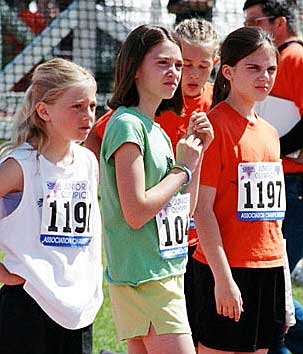Shin splints: what are they?
 Shin splints generally
refer to inflammation of the tendons attaching the shin muscles to the
tibia (shin bone). They occur when the muscles on the inside part of
the tibia which control foot movement when running, or the tibia lining
itself, become inflamed.
Shin splints generally
refer to inflammation of the tendons attaching the shin muscles to the
tibia (shin bone). They occur when the muscles on the inside part of
the tibia which control foot movement when running, or the tibia lining
itself, become inflamed.
The inflammation is a warning sign that, for whatever reason, the muscles are unable to handle the stress being placed on them.
Shin splints: common causes
Shin splints commonly result from overuse. Not surprisingly, they are most common in track and field and other sports that involve a lot of running such as soccer, basketball, and lacrosse. All of the following can result in shin splints:
-
A structural imbalance or irregularity, such as foot placement (usually overpronation, e.g. where the foot flattens when the athlete runs), can predispose an athlete to shin splints. Where this occurs, orthotics (special inserts into the shoe) an be helpful;
-
Too many miles running on hard surfaces;
-
Abrupt changes in running surface such as going from an indoor to outdoor track, or from the grass and/or dirt of a cross country course to the harder surface of an outdoor or indoor track; or
-
Abrupt change in training regimen such as going from running on flat surfaces to running up and down hills (i.e. adding plyometrics, a type of training designed to produce fast, powerful movements, generally for the purposes of improving performance).
All can stress the muscles around the tibia. If they are not strong enough to adapt to the change they become tired and fatigued, resulting in more foot motion and more stress on the muscle causing inflammation. Shin splints make running very painful, pain which is increased by the added stress of wearing spikes during training and competitions.
Shin splints: treatment
If shin splints are suspected, your child should be seen by his doctor because sometimes what looks like shin splints are actually tibia stress fractures. Treatment often includes prolonged RICE (rest, ice, compression, and elevation) and non-steroidal anti-inflammatory medications like ibuprofen at doses recommended by your child's doctor.
-
Anti-inflammation medication (ibuprofen etc.);
-
Ice. Ice should always be applied as soon as the workout is over;
-
Heating pads to warm and loosen up the muscles before training sometimes helps.
-
Training changes:
-
Less running. Because shin splints results from overuse, the only lasting remedy is to remove what causes them. That usually means one thing: less running and stress on the legs until the inflammation subsides.
-
Rest. Even if orthotics are prescribed, the fastest way to eliminate the pain of shin splints is to stop running to let the inflammation recede, and then gradually build back up in training volume using the orthotics.
-
Cross-training. Pool running or cross training on a bike/elliptical are great ways to remove direct stress on the tibia while maintaining fitness during recovery.
-
Shin splints: prevention
Some athletes seem predisposed to shin splints, making prevention almost impossible.
For the rest, the key to prevention is a training program developed with the help of an athletic trainer who understands the developmental issues young athletes face.
According to Laura Christopher, the University of Maryland athletic trainer, the four most important things an athlete can do to prevent inflammation are:
-
Don't over train. More volume is not always better training or good for your child's body. Ideally each athlete will find the training volume that is the most effective for her but allows her to maintain health. Any increase in volume should be done gradually. For example, have your child increase training volume by 5% and then give her several weeks to adjust before adding more.
-
Train on softer surfaces. In general, training on softer surfaces will produce less wear and tear on your joints and bones. This is good for both short term and long term health. If your child loves to run and wants to still be doing it later in life, he should do what he can to preserve his joints when he is young.
-
Avoid abrupt changes in training surfaces. Some athletes can go back and forth between grass, trails, roads and tracks with no problems. But if you can't, keep that in mind when planning your training.
-
Pick the right shoes: Different shoes are made for different kinds of feet and varying foot placements. Before your child begins training, or if she is experiencing any foot or leg pain, visit a running store to have her feet evaluated and get recommendations for running shoes that will give her the best fit and support.








